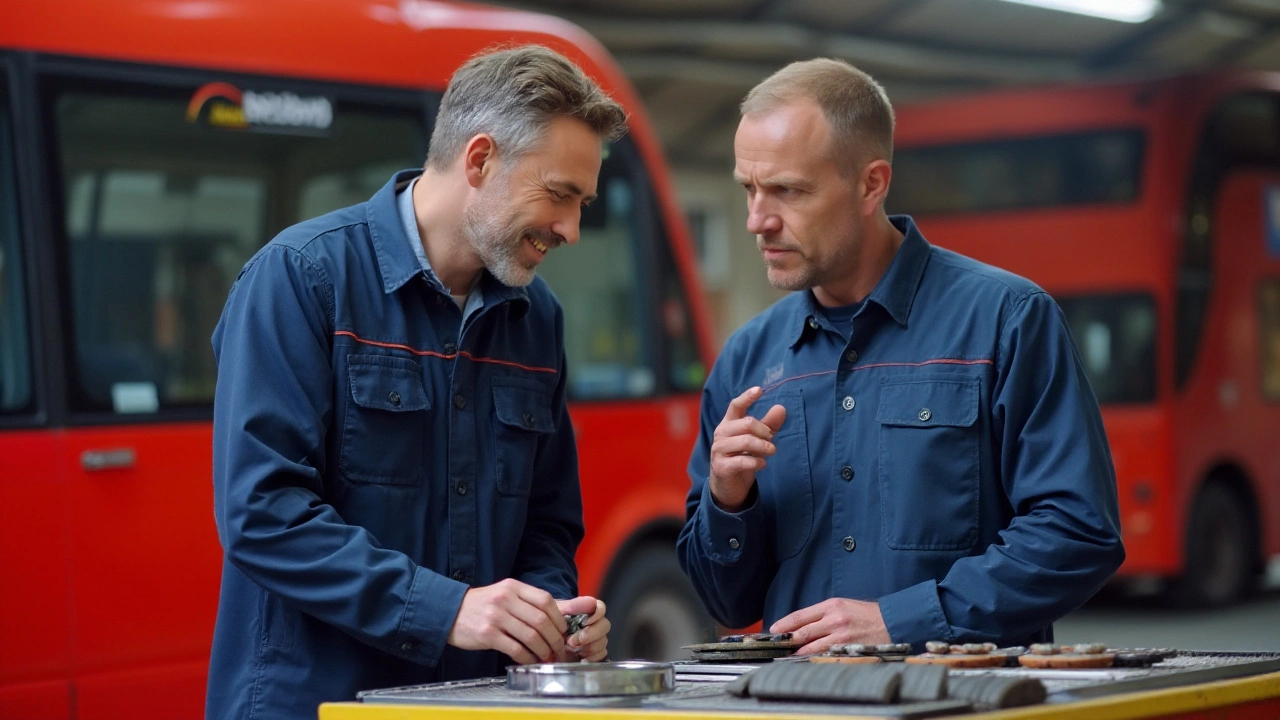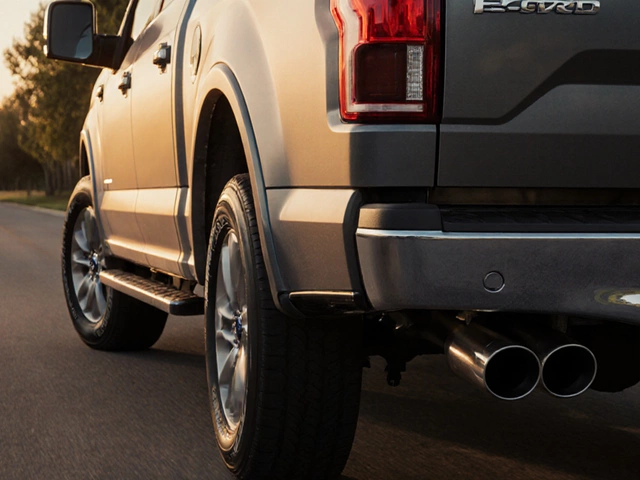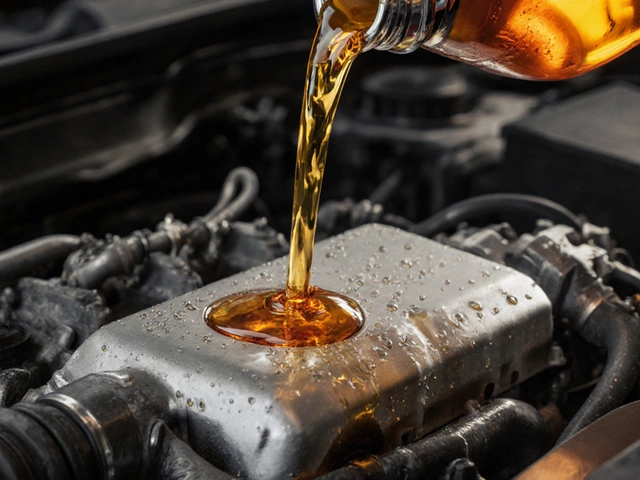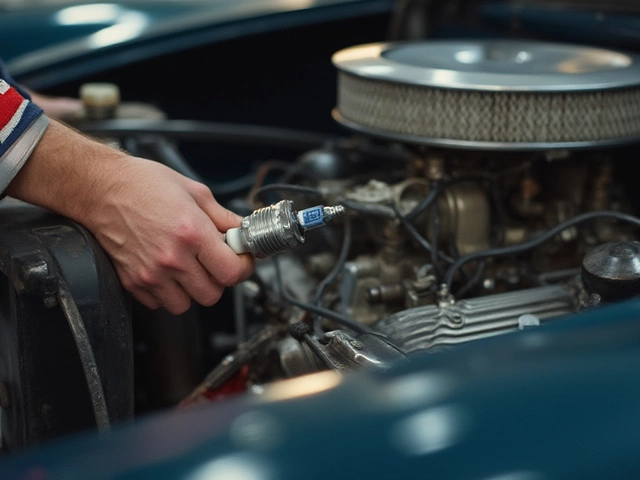Brake maintenance often becomes a topic of discussion among drivers, mechanics, and anyone invested in vehicle safety. At the heart of this is the question: can you replace brake pads without changing the discs as well? This seemingly simple question opens up a world of nuances. For instance, the way driving habits impact brake wear, or how understanding the signs of disc deterioration can save you from future headaches.
In this article, we'll explore what sets brake pads and discs apart and delve into the circumstances under which you might replace just the pads. We'll discuss how keeping an eye on your car's brake system can prevent issues and ensure your safety. So, buckle up as we take you through the essential facts and practical tips to keep your brakes in top-notch condition.
- Understanding Brake Pads vs. Discs
- When to Change Only Brake Pads
- Signs Discs Need Replacement Too
- Tips for Maintaining Brake Efficiency
Understanding Brake Pads vs. Discs
When it comes to ensuring the safety and performance of your vehicle, a fundamental element to understand is the braking system, of which brake pads and brake discs are integral components. Despite their crucial roles, they perform distinct functions, and recognizing these differences can significantly impact how you maintain your car. Brake pads are generally the first parts to make contact with the brake discs when the brake pedal is pressed. These pads convert kinetic energy into thermal energy through friction, which slows down the vehicle. This process, though efficient, leads to wear over time, necessitating regular checks and replacements.
On the other hand, brake discs, often known as rotors, are the flat, shiny metallic discs attached to the wheels. As opposed to brake pads, discs play a secondary role, absorbing and dissipating the heat generated by the friction with the brake pads. Their durability is naturally higher, yet over time, even discs can face issues such as warping or scoring due to excessive heat or debris. Notably, the longevity of discs depends heavily on driving habits, environment, and the frequency of maintenance checks. An insightful observation shared by experts is that, "Regular driving in hilly areas can exponentiate the wear on brake components due to the increased demand on them," reminding us of the impact geography can have on brake lifespan.
It’s vital to note that while brake pads might last anywhere from 30,000 to 70,000 miles, discs generally tend to outlive them, with expected lifespans ranging from 70,000 to 100,000 miles. However, the condition of each is closely linked; worn-out pads can damage the discs, leading to unexpected expenses. In some cases, maintenance costs can escalate if both components require simultaneous replacement. Often, the decision of whether to replace just the pads or both the pads and discs hinges on careful inspection. Mechanics look for signs of thinning on the pads and any visible damage to the discs. Routine inspections can catch these problems early, preventing safety hazards and costly repairs down the line.
Let's not forget that maintenance is key. Adhering to a disciplined care routine can dramatically enhance brake performance and safety. Regular cleaning of dust and grime from the brakes can prevent premature wear. Additionally, periodic lubrication of brake components keeps the system fluid and responsive. By doing so, you not only extend the life of individual parts but also maintain the efficacy of your entire braking system. Brake efficiency is crucial, so consult a professional if you're unsure. Evaluating the performance effectiveness of your brakes with every visit to your technician is a good practice that contributes to peace of mind and knowledge that your vehicle is safe.

When to Change Only Brake Pads
Changing only the brake pads in your vehicle might seem like a simple task, but it requires a clear understanding of your car's braking components and their condition. There’s no one-size-fits-all answer because it largely depends on several determining factors, such as the quality and even the type of materials used, your driving habits, and the current state of the brake discs. Typically, brake pads can be replaced without the need for new brake discs if the discs are still in good condition. However, it's critical to assess them carefully—a worn-out brake disc is a risk you don't want to take on the road.
Most importantly, evaluating the wear on your brake discs is key. You should regularly check the thickness of the discs, as manufacturers specify a minimum thickness that you shouldn’t go below. If the discs are above this, changing only the brake pads might be sufficient. Additionally, other signs like deep scoring, obvious warping, or cracks should not be present. To be certain, it's often-wise to consult your mechanic, who can assess the condition of your discs more accurately.
"Routine inspections and timely maintenance are the real keys to ensuring road safety," notes Johnson & Thompson, a leading automotive service center.
Noisy brakes might not always mean the discs need changing. Sometimes, the sound is just from accumulated dirt, or the pads may be wearing unevenly. For instance, renowned studies have shown that more than 70% of brakes that produce noise are simply due to pad wear without an underlying disc issue, as documented in the Journal of Automobile Engineering. Nonetheless, continuing to drive with any brake noise, whether from pads or discs, isn’t advised. Thus, inspecting your pads for wear from time to time is a proactive safety approach.
Interestingly, the lifespan of brake pads varies widely based on vehicle make, model, and driving conditions. For instance, highway driving at steady speeds tends to wear down brakes less compared to frequent stop-and-go city traffic. Drivers should expect different lifespans accordingly. Some people may find their pads lasting over 40,000 miles if their discs remain uncompromised, whereas others might need replacements sooner. Experts recommend having your brakes checked every oil change or at least every 6 months, whichever comes first, to prevent any major problems from developing.
Finally, remember to consider the material of your brake pads. Organic, semi-metallic, and ceramic pads all wear differently. While ceramic pads offered better longevity and superior performance, they might prove unnecessary if your discs are nearing the end of their lifespan and would do better with semi-metallic. Weigh each factor with care, and make your decision in alignment with the advice of a trusted automotive professional.

Signs Discs Need Replacement Too
Noticing a problem with your car's brakes can be alarming, yet deciphering what those signs mean isn't always straightforward. Discs – also known as brake rotors – are equally crucial in car maintenance like brake pads, contributing significantly to the efficiency of the braking system. Over time, and depending on your driving style, these discs face wear and tear that can affect their performance. A constant vibrating sensation or pulsation felt through the pedal while braking isn't just an annoyance; it's a telltale sign that your discs might be unevenly worn or warped. If left unchecked, this can lead to reduced stopping power, compromises in safety, and can even damage your brake pads more rapidly.
It's crucial to look for visual cues as well. When examining the discs, if you notice excessive grooves, scoring, or any cracks, these are clear indicators that it's time for a replacement. Another technical check involves measuring the thickness of the discs with a micrometer. Most vehicles have a manufacturer's recommendation for the minimum acceptable thickness. If the discs have worn beyond these limits, replacing them is essential. Moreover, unusual noises such as squeaking or grinding while applying the brakes should never be ignored. Although these sounds sometimes signify worn-out brake pads, they can also reflect serious issues with the discs, especially if the noises persist after a pad change.
Having precise data on the lifespan of brake discs can be eye-opening. According to automotive experts, under normal driving conditions, brake rotors can last anywhere from 50,000 to 70,000 miles. However, aggressive braking, frequent towing, or driving in stop-and-go traffic can significantly reduce this lifespan. Interestingly, a survey by a leading automotive safety council found that about 25% of drivers required brake repairs due to delayed disc replacement.
Citing one such expert, they note, "Neglecting brake rotor maintenance not only endangers the driver but also places undue stress on the entire braking system, leading to escalated repair costs."Given such insights, investing time in regular inspections can easily circumvent these issues.
In addition, keep in mind that professional assistance usually leads to a more accurate analysis. A certified mechanic can perform a comprehensive brake inspection, ensuring that both brake pads and discs are functioning optimally. This process involves removing the wheel to thoroughly inspect both components' condition – something that might go unnoticed with a basic surface check. Consider this a part of your routine maintenance, similar to oil changes or tire rotations. Keeping your disc and pad system healthy ensures that every time you press on the brake pedal, you can trust it to respond promptly and efficiently.

Tips for Maintaining Brake Efficiency
Maintaining your car's brakes is akin to ensuring your safety on the road. One cannot overstate the importance of regular check-ups and maintenance procedures, especially when considering the vital role of brake pads and discs. Simple actions taken regularly can lead to significant benefits in terms of both longevity and performance. A thorough understanding of your vehicle’s brake system empowers you to respond proactively rather than reactively to brake issues, thereby enhancing the overall lifespan of the brakes and contributing to safer driving conditions. The journey to maintaining effective brakes starts with getting acquainted with how they function and recognizing when they need attention.
The first tip is to be mindful of your driving habits as they directly affect brake wear. Aggressive driving, which involves sudden stops or frequently slamming on the brakes, significantly reduces the lifespan of your brake components. Instead, adopting a driving style that anticipates stops and allows gradual deceleration aids in reducing the stress on brake discs and pads. Another critical factor is regular inspection and timely replacement of brake components. Whether it's a DIY approach or seeking professional help, ensuring that brake pads are within the safe thickness limit is essential. Driving with worn-out pads can lead to discs wearing out prematurely, increasing repair costs significantly.
Another essential maintenance tip involves fluid dynamics. Brake fluid plays a crucial role in the efficient functioning of your brakes by transferring the force from your foot to the wheels. Over time, the fluid can absorb moisture, leading to a lower boiling point and reduced efficiency. It is typically advisable to change the brake fluid every two years or as recommended by the manufacturer. Here's where a preventive approach helps; by simply checking and replacing fluid as needed, you're ensuring that brake efficiency isn't compromised. A functioning fluid system keeps your brakes responsive and smooth, adding to the overall safety mix.
"Good brakes are the primary safety feature, not bells and whistles," says automotive expert, Tom Magliozzi, emphasizing the paramount importance of brake maintenance.
Lastly, consider the environmental factors that might affect your brakes. Parking indoors can prevent cold weather effects, such as rust and corrosion on your brake parts, which are common in regions with harsh winters. Using covers or tarps if garage parking isn't an option can offer some protection. This preservation ensures maximum brake power and durability. Also, paying attention to unusual sounds and sensations, such as squealing, grinding, or a spongy brake pedal, can be the earliest signs that your brake system needs attention. The key lies in taking preventive measures that, when aligned with regular vehicle servicing, can work wonders for brake efficiency.






